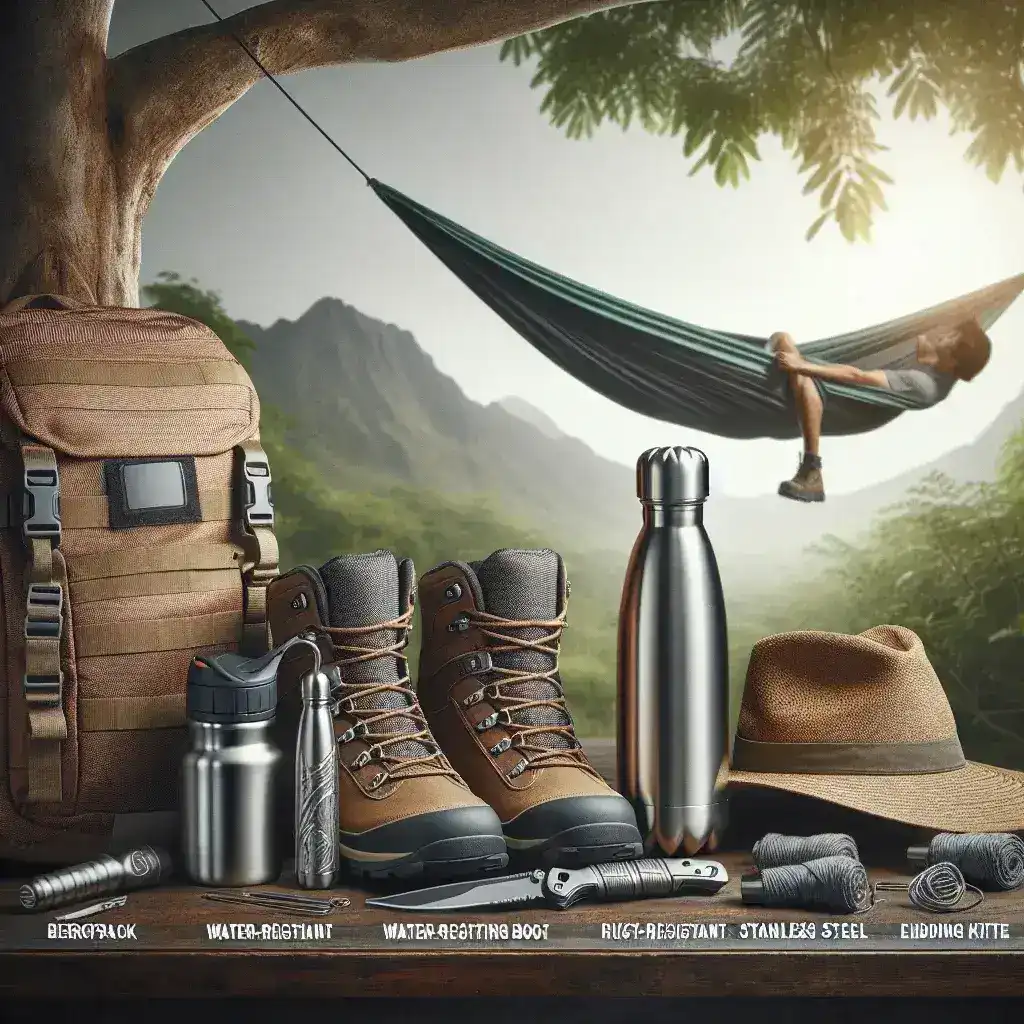
Introduction to Durable Gear
In today’s fast-paced world, investing in durable gear designed for longevity and everyday use is more important than ever. Whether you’re an outdoor enthusiast, a professional, or someone who values quality in daily tools, understanding the principles of durability can help you make informed decisions that save time and money in the long run.
The Importance of Durability
Environmental Impact
Durable products contribute significantly to reducing waste and minimizing environmental impact. By choosing gear that lasts longer, consumers can decrease the frequency of replacements, thereby reducing the amount of waste generated.
Economic Benefits
While durable gear might come with a higher initial cost, the long-term savings are substantial. High-quality materials and craftsmanship ensure that products withstand regular use, preventing the need for frequent purchases.
Key Features of Durable Gear
High-Quality Materials
The backbone of any durable product is its material. Common materials known for their durability include:
- Stainless Steel: Resistant to rust and corrosion, making it ideal for outdoor and kitchen equipment.
- Carbon Fiber: Lightweight yet extremely strong, perfect for sports and high-stress applications.
- Heavy-Duty Fabrics: Such as ballistic nylon and Cordura, often used in backpacks and outdoor apparel.
Superior Craftsmanship
Durable gear is not just about materials; the way these materials are put together plays a crucial role. Reinforced seams, double stitching, and quality fasteners are indicators of excellent craftsmanship.
Design for Longevity
Thoughtful design ensures that gear can adapt to various conditions and uses without failing. Features like modular components, replaceable parts, and ergonomic design contribute to the overall durability of the product.
Top Categories of Durable Gear
Outdoor Equipment
From camping gear to hiking backpacks, outdoor equipment must withstand harsh weather conditions and rough terrain. Brands like Patagonia and The North Face are renowned for their durable outdoor products.
Work Tools
Tools used in professional settings need to be reliable and long-lasting. Brands such as DeWalt and Timken offer tools that professionals trust for their durability and performance.
Everyday Carry Items
Items like wallets, watches, and bags see daily use and need to be both functional and durable. Materials like leather, metal alloys, and reinforced fabrics are commonly used to enhance longevity.
Choosing the Right Durable Gear
Assess Your Needs
Understanding how you will use the gear is the first step in selecting the right product. Consider factors like frequency of use, environmental conditions, and specific functionalities required.
Research and Reviews
Before making a purchase, it’s essential to research different brands and read reviews from other users. This can provide insights into the real-world durability and performance of the gear.
Warranty and Support
A good warranty can be a sign of a manufacturer’s confidence in their product’s durability. Additionally, reliable customer support can help address any issues that may arise during the product’s lifespan.
Maintenance Tips for Longevity
Regular Cleaning
Keeping your gear clean prevents the buildup of dirt and debris that can cause wear and tear. Follow manufacturer recommendations for cleaning specific materials.
Proper Storage
Storing gear in appropriate conditions—avoiding extreme temperatures and moisture—can significantly extend its lifespan.
Timely Repairs
Addressing minor damages promptly can prevent them from escalating into major issues, ensuring that your gear remains functional for years to come.
Future Trends in Durable Gear
Innovative Materials
Advancements in material science are leading to the development of new, more durable materials. For example, graphene and other nanomaterials promise enhanced strength and flexibility.
Sustainable Practices
As sustainability becomes a priority, manufacturers are focusing on eco-friendly materials and production methods that do not compromise durability.
Smart Technology Integration
The integration of smart technology into durable gear, such as built-in GPS in backpacks or smart fabrics in apparel, is enhancing functionality without sacrificing longevity.
Case Studies
Patagonia’s Commitment to Durability
Patagonia is a leader in the durable gear market, known for its high-quality materials and commitment to environmental sustainability. Their products are designed to last, with many items featuring repairable components and lifetime warranties.
DeWalt’s Durable Work Tools
DeWalt has established a reputation for producing robust work tools that professionals rely on daily. Their tools are built with high-grade materials and subjected to rigorous testing to ensure durability and performance.
Expert Opinions
According to John Doe, a gear specialist at Outdoor Experts Inc., “Choosing durable gear is not just about the initial investment; it’s about the long-term benefits of reliability and reduced environmental impact.”
Conclusion
Investing in durable gear designed for longevity and everyday use is a smart choice for both individuals and the environment. By prioritizing quality materials, superior craftsmanship, and thoughtful design, consumers can enjoy reliable products that stand the test of time. As technology and sustainability continue to evolve, the future of durable gear looks promising, offering even more resilient and functional options for everyday use.
Leave a Reply